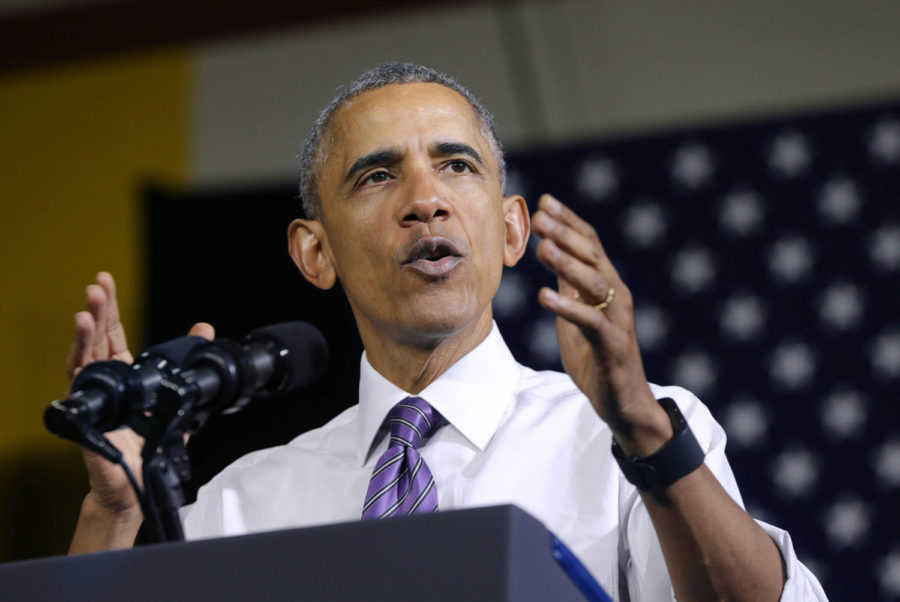Illinois emergency room visits increased after Obamacare, study says
August 30, 2016
Hospital emergency department visits increased in Illinois after the Affordable Care Act took effect — the opposite of what many hoped would happen under the landmark health care law, according to a new study.
“Emergency departments are already overcrowded, and bringing more patients in will continue to make that worse,” said Dr. Scott Dresden, an assistant professor of emergency medicine at Northwestern University Feinberg School of Medicine, and the lead author of the study.
Emergency visits in Illinois increased 5.7 percent, or by more than 14,000 visits a month on average, in 2014 and 2015 compared with 2011 through 2013, according to the study, published online in Annals of Emergency Medicine, a peer-reviewed journal.
Advertisement
The number of visits by uninsured people dropped in Illinois the Affordable Care Act, also known as Obamacare, took effect. But that decrease was not enough to offset a higher number of visits by those with Medicaid and private insurance, according to the study.
The study adds to the conversation about the effectiveness of the health care law, as some other researchers have come to different conclusions.
The Affordable Care Act mandated that all Americans have health insurance and forbade insurers from denying coverage because of pre-existing conditions. Illinois expanded its Medicaid program under the law, and three-fourths of Illinois residents now qualify for tax credits to help defray the cost of buying private insurance through the Obamacare marketplace.
MORE: Illinois election officials say hack yielded information on 200,000 voters
Since major parts of the Affordable Care Act went into effect, the percentage of nonelderly Illinois residents without insurance fell to 7.9 percent in 2015, from 14.2 percent in 2013, according to the federal government.
One of the goals of expanding coverage to all was to reduce the use of pricey services, such as emergency department visits, which can sometimes be a last resort for people who don’t see doctors regularly, according to the study.
But the study’s authors noted that the spike in visits in Illinois “runs contrary” to that goal. It’s unknown whether the surge will persist, or if was a temporary result of people with long-untreated conditions flocking to emergency rooms once they got insurance, the study said.
Advertisement*
A spokesman for the U.S. Department of Health and Human Services was not able to immediately comment on the study Monday afternoon. But Jay Bhatt, chief health officer for the Illinois Health and Hospital Association, said he believes the increase is temporary.
He attributed it to pent-up demand from previously uninsured people and patients learning how to use health insurance for the first time. Bhatt, who is also a primary care physician on Chicago’s northwest side, said he regularly sees patients who are newly insured and don’t know what to do with their coverage.
“I think there’s just going to be a lot more education,” Bhatt said. “The learning curve on how to use coverage doesn’t happen overnight.”
MORE: Illinois governor loses $400 million vote on teacher pension fund issue
The study also noted a potential lack of timely access to outpatient, primary and specialty care providers in Illinois might be one reason for the increase in emergency room visits.
“Patients may believe they have no other option for timely and effective acute care besides the (emergency department),” according to the study.
Carrie Nelson, chief clinical officer for Advocate Physician Partners, said ensuring there are enough primary care physicians and promoting a team-based approach to health care could help decrease emergency visits in the long run. Advocate Physician Partners is Advocate Health Care’s aligned physician network.
Nelson couldn’t immediately provide data Monday showing whether overall emergency visits are up at Advocate hospitals, though she said the system’s emergency departments are busy.
But Nelson said Advocate has had success reducing emergency department visits among patients involved in certain Advocate programs.
For example, care managers can see how patients are using the health system and reach out to them if they are visiting the ER when a primary physician would do. Community health workers also visit patients’ homes to talk with them about the value of primary care doctors and alternatives to emergency care, she said.
The study’s findings are in line with the results of a nationwide poll last year in which three-fourths of emergency physicians surveyed reported seeing increasing numbers of emergency visits. That poll was released by the American College of Emergency Physicians, the same group behind the journal that published the Illinois study.
But the U.S. Centers for Disease Control and Prevention released a report earlier this year showing the percentage of adults visiting emergency rooms didn’t change much between 2013 and 2014. Some studies have shown decreases.
Those mixed results suggest factors such as the number of people uninsured in a state, a lack of Medicaid expansion, availability of primary care and financial incentives for hospitals and clinicians also may influence emergency department visits, according to the study.
Emergency department visits were increasing before the Affordable Care Act took effect, Dresden said, but the jumps revealed by the study go beyond those increases.
The study did not include federal hospitals such as U.S. Department of Veterans Affairs hospitals and it looked only at patients ages 18 to 64.
___
(c) 2016 the Chicago Tribune
Visit the Chicago Tribune at www.chicagotribune.com
Distributed by Tribune Content Agency, LLC.
Advertisement








